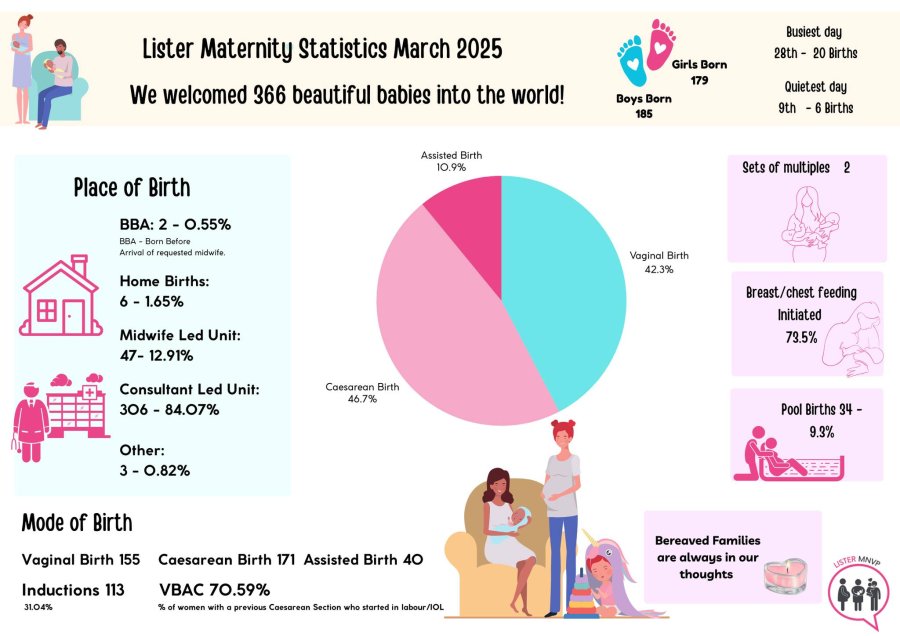What do your stats look like?

My local maternity unit posts monthly about their birth outcome stats in the form of a colourful info graphic. Here's a quick summary of what stands out from the Lister Maternity Statistics, March 2025:
-
Caesarean births were 46.7% of all births (171 out of 366), which is quite high compared to national averages.
-
Assisted births (e.g., forceps, ventouse) made up 10.9% (40 births).
-
Inductions were 31.04% (113 births).
-
Only 42.3% were straightforward vaginal births.
-
VBAC (Vaginal Birth After Caesarean) success for those starting labour was 70.59%, which is pretty good!
How Wise Hippo Antenatal Classes Could Help Lower Intervention Rates:
✅ Building Confidence in Birth Physiology
Many interventions happen because parents aren't fully prepared for labour, what sensations are normal, and how long labour can naturally take. Good antenatal classes that focus on how birth works (not just what can go wrong!) can boost trust in the body’s natural process, potentially reducing unnecessary interventions.
✅ Reducing Fear (and therefore reducing the Fear-Tension-Pain cycle)
Fear creates tension, which creates pain, which can stall labour and lead to more inductions, epidurals, and caesareans. Classes that focus on relaxation, mindset, and breathing could lower anxiety and help keep labours progressing naturally.
✅ Educating about Induction Alternatives and Decision-Making
31% inductions is high. Many parents don't realise they can ask questions like "Is it urgent?" or "What are my alternatives?" Good classes teach parents about the BRAIN decision-making tool (Benefits, Risks, Alternatives, Instinct, Nothing) and empower them to make informed choices about when and if interventions are truly needed.
✅ Promoting Active Birth Techniques
Encouraging movement, upright positions, and gravity-assisted labour (e.g., squatting, leaning forward, being in water) could lower assisted delivery rates. Pool births were only 9.3%—good classes could highlight how water immersion can help reduce pain and interventions.
✅ Partner Preparation
Well-prepared birth partners can act as powerful advocates in the birth room, helping to create a calm environment, remind mothers of coping techniques, and confidently communicate with healthcare professionals.
✅ Understanding When Intervention Is Helpful
It’s not about saying no to all interventions — it’s about using them wisely. Classes that explain when interventions are life-saving (rather than automatic) can build trust with staff and reduce conflict, while still lowering unnecessary rates.
So there we have it, March hasn't been a great month at my local hospital. I wonder how the birth outcome stats compare in your area?
With warmth and wisdom
Tamara x
